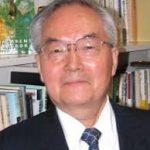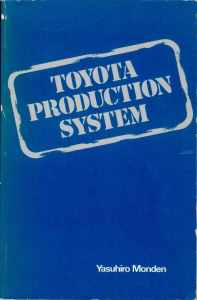Years before James P. Womack and Daniel T. Jones helped give us the popular version of Toyota’s production system, “Lean production,” there was a professor in Japan seeking to carefully understand and document in detail Toyota’s production system and their overall management system. That professor was Yasuhiro Monden (learn about Professor Monden here).
 Professor Monden’s books have been essential reading to help me gain an accurate understanding of TPS and Toyota’s overall management system. But, not for the purpose of copying it without thinking. For me, and for you, the purpose is understanding so that we think and adapt TPS, if needed, and evolve it according to actual needs, while maintaining fidelity to purpose, goals, and sub-goals.
Professor Monden’s books have been essential reading to help me gain an accurate understanding of TPS and Toyota’s overall management system. But, not for the purpose of copying it without thinking. For me, and for you, the purpose is understanding so that we think and adapt TPS, if needed, and evolve it according to actual needs, while maintaining fidelity to purpose, goals, and sub-goals.
If you have not read his English language books, you should. In particular:
- Toyota Production System: An Integrated Approach to Just-In-Time (4th Ed., 2012)
- Toyota Management System: Linking the Seven Key Functional Areas (1997)
- Cost Reduction Systems: Target Costing and Kaizen Costing (1995)
Reading these books will help you gain a much better understanding of TPS and focus your efforts, which, if you are like most Lean practitioners, have drifted significantly since the introduction of gemba walks, value stream maps, A3 reports, and the like.
 Professor Monden gave us the first detailed understanding of TPS, beginning with his book, 1983 book, Toyota Production System: Practical Approach to Production Management. Read the first edition followed by the more detailed and expansive 4th edition. It will show you how much you don’t now.
Professor Monden gave us the first detailed understanding of TPS, beginning with his book, 1983 book, Toyota Production System: Practical Approach to Production Management. Read the first edition followed by the more detailed and expansive 4th edition. It will show you how much you don’t now.
The Foreword to the first edition was written by Taiichi Ohno. It is only a little more than one page long. But, as always, Mr. Ohno has interesting things to say, some of which bears repeating here. Why? Because the community of Lean promoters and practitioners are rapidly losing sight of the purpose, goals, methods, and way of thinking of TPS (inclusive of The Toyota Way) due to strange ideas, odd influences, and impractical business policies.
In the Foreword, Mr. Ohno said:
“The technique we call Toyota production system was born… without the benefit of funds or splendid facilities.”
In other words, use your head, not money.
“Above all, one of our most important purposes was increased productivity and reduced costs.”
Toyota was in a competitive marketplace and had visions of domestic and global growth that drove the need to increase productivity and reduce costs. TPS was created in response to practical business needs. Is your situation different? Not likely. What is your purpose for pursuing Lean? Is it driven by practical business needs or by fashion? By costs, Ohno means all costs, not just manufacturing costs; all costs past, present, and future.
“Our approach has been to investigate one by one the causes of various ‘unnecessaries’ in manufacturing operations and to devise methods for their solution, often by trial and error.”
Do you investigate, one by one, the causes of various “unnecessaries” by trial-and-error? Or, do you apply the same old solutions to recurring problems, whose causes remain unclear, using value stream maps and A3 reports as justification and to obtain management approval?
“…it was our observation that even in Japan, it was difficult for the people of outside companies to understand our system; still less was it possible for foreign people to understand it.”
Chances are, you are like me: We – including Womack and Jones – are foreign people. Have we put in the necessary daily study, experimentation, and practice to understand it? The answer for the vast majority of people, if we are honest, is “no.” But, don’t let that get you down. Instead, it should inspire you to learn and do more. Professor Monden’s books will be a big help to you.
For example, Professor Monden says in Toyota Production System (first edition, 1983, page 2):
“…although cost-reduction is the system’s most important goal, it must achieve three other sub-goals in order to achieve its primary objective. They include:
1. Quantity control, which enables the system to adapt to daily and monthly fluctuations in demand in terms of quantities and variety;
2. Quality assurance, which assures that each process will supply only good units to subsequent processes;
3. Respect-for-humanity, which must be cultivated while the system utilizes the human resources to obtain its cost objectives.
It should be emphasized here that these three goals cannot exist independently or be achieved independently without influencing each other or the primary goal of cost reduction. It is a special feature of the Toyota production system that the primary goal cannot be achieved without realization of the subgoals and vice versa. All goals are outputs of the same system; with productivity as the ultimate purpose and guiding concept, the Toyota production system strives to realize each of the goals for which it has been designed.”
Have you ever heard it put that way? Has the popular version of TPS, Lean production, made this clear to you?
Remember, we must think and adapt TPS to our unique situations and evolve it according to actual needs while maintaining fidelity to purpose, goals, and sub-goals. Is that what you are doing? If not, you need to make some major corrections.
